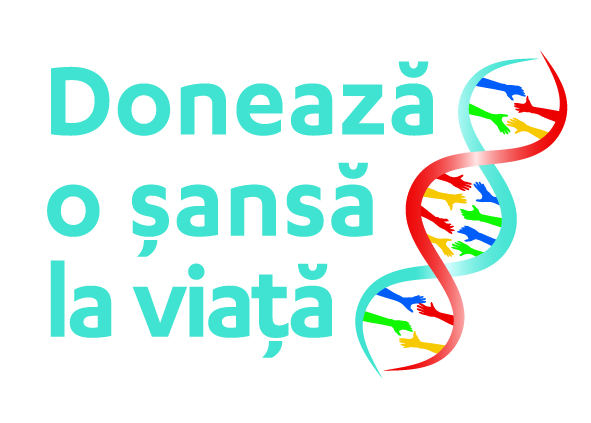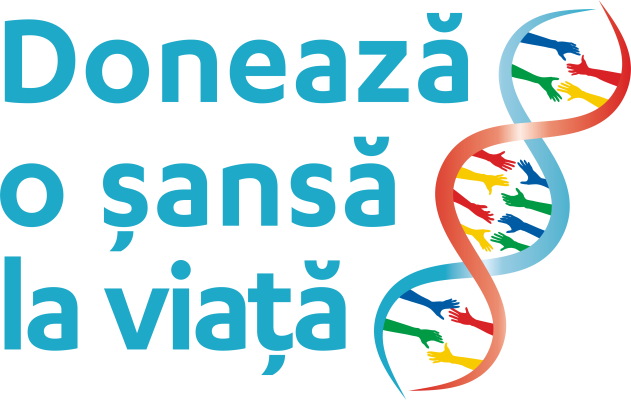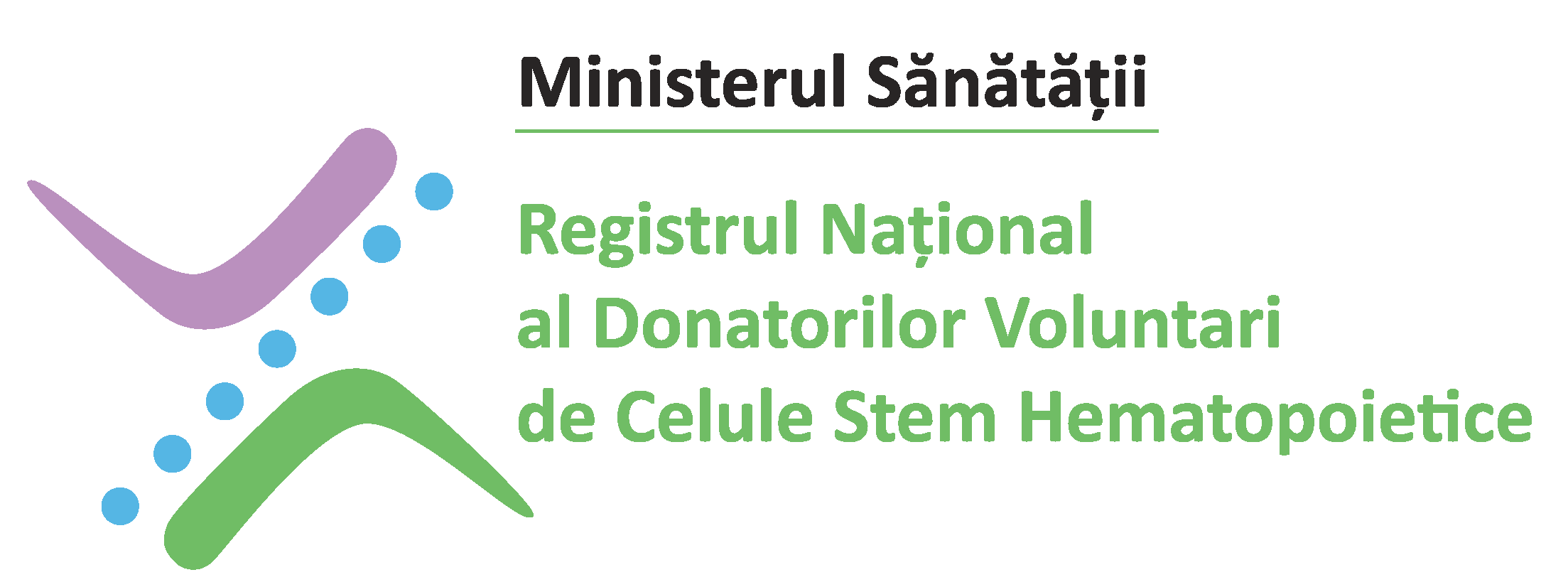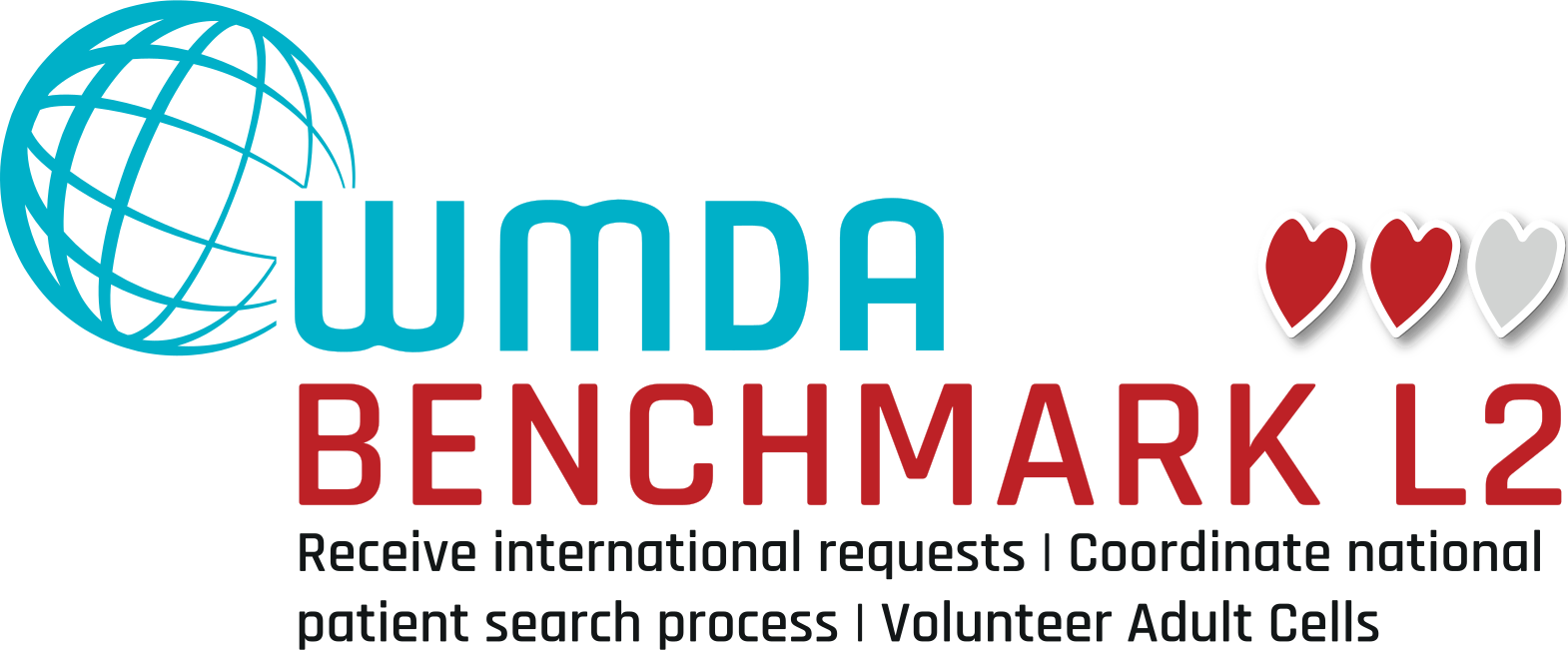National Registry of Voluntary Hematopoietic Stem Cell Donors (RNDVCSH)
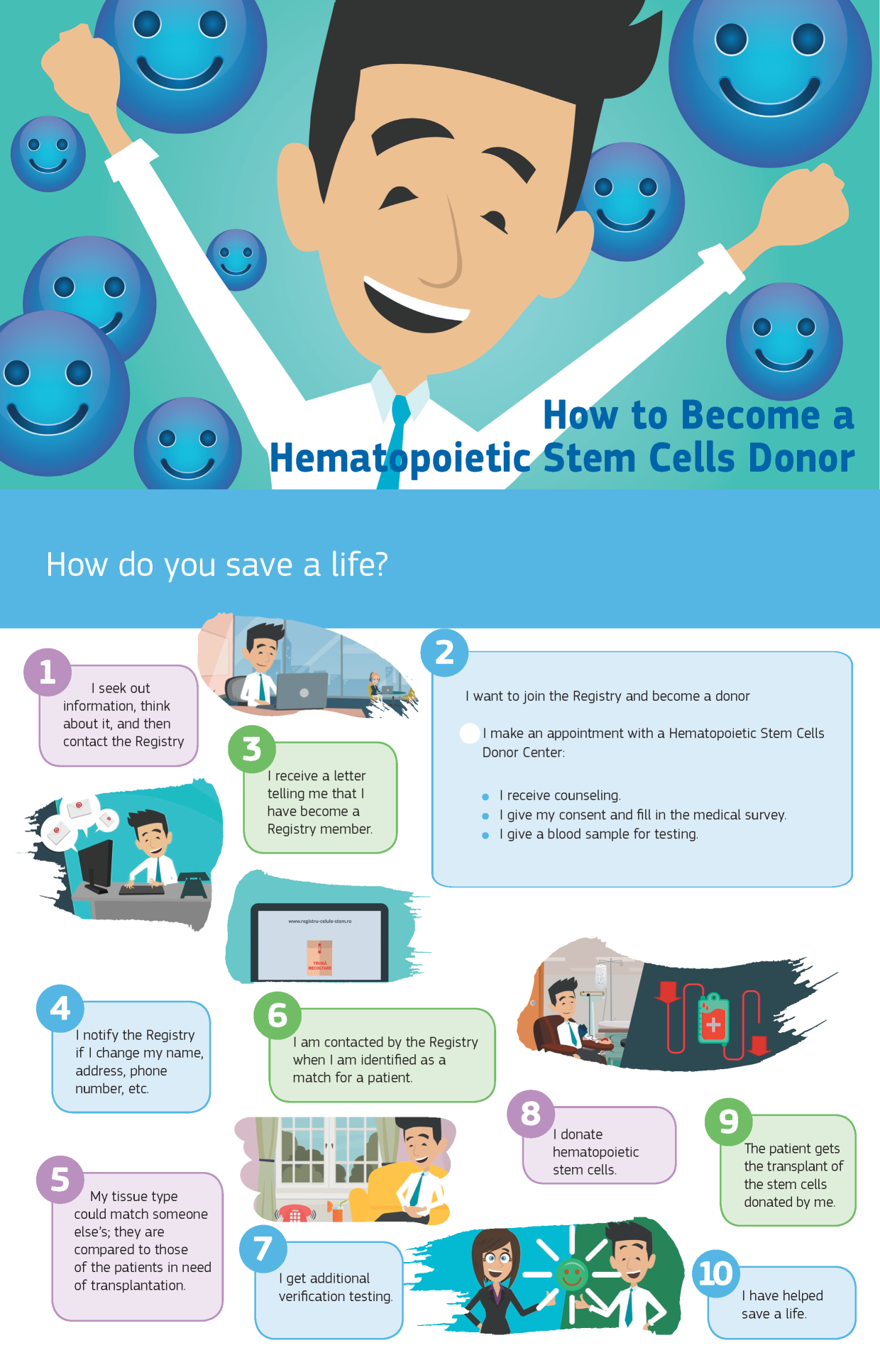
Str. Constantin Caracaș, Nr. 2-8, Sector 1, Bucharest 011155
Phone: 021 201 8800, Fax: 021 201 8828
Email: office@rndvcsh.ro | www.rndvcsh.ro
Visit: www.registru-celule-stem.ro
Social Media: https://www.facebook.com/registrucelulestem; https://www.instagram.com/registrucelulestem/; https://www.youtube.com/@registruldonatorilordecelu784
Every year, thousands of children and adults worldwide are diagnosed with blood cancers (leukemia, lymphoma, myeloma) or other serious diseases of the blood or immune system that, if untreated, are fatal.
For many of them, a hematopoietic stem cell transplant from a related or unrelated donor is their only chance.
It’s more likely to find a compatible donor within the same population group or geographical region as the patient. That’s why most countries have established registries of volunteer stem cell donors. Currently, there are millions of registered hematopoietic stem cell donors worldwide.
Donors are first sought among the patient’s siblings. However, only about 25% of cases find a compatible match this way. In the rest, patients need a compatible unrelated donor.
Deciding to donate hematopoietic stem cells requires good information and thoughtful consideration. We hope the information in this brochure helps you make an informed decision to register as a volunteer hematopoietic stem cell donor.
By registering, you could give someone with leukemia or another blood cancer a chance at life.
It’s incredible—don’t keep it a secret.
Tell your friends, family, and community about the amazing thing you might do one day.
Stem cell donation is voluntary, anonymous, and unpaid.
Stem cells are considered the basic components of life. They are the foundation of all other cell types in the body.
Hematopoietic stem cells are capable of becoming any adult (functional) blood or immune cell. These cells are found in the bone marrow.
They can be collected from peripheral blood, bone marrow, or umbilical cord blood at birth.
They are used to treat and cure conditions such as leukemia, blood cancers, autoimmune diseases, or inherited metabolic disorders.
Bone marrow is soft tissue located in large, flat bones. It produces stem cells that develop into blood cells. It’s an essential organ for survival.
Many people confuse bone marrow with spinal cord tissue—these are entirely different.
It’s essentially a transfusion of healthy stem cells, regardless of how they are collected.
Before the transplant, patients undergo chemotherapy and possibly radiotherapy to destroy the diseased marrow and make room for the new healthy cells.
RNDVCSH is responsible for coordinating recruitment, testing, and donation activities for unrelated donors according to World Marrow Donor Association (WMDA) standards.
Our mission is to search, identify, and provide the most suitable donor for any patient needing a stem cell transplant without a compatible relative.
We manage a secure database of individuals who consent to be potential donors. All data handling complies with national and European standards.
Our campaign: “Donate a Chance at Life!” encourages registering.
As a WMDA member, the registry is connected with similar registries worldwide, vastly expanding the potential donor pool.
You may register if you:
– Are between 18 and 45 years old
– Are in good general health
– You or your partner have tested positive for HIV, HTLV, Hepatitis B or C
– Are registered in another country’s donor registry
– Have/had cancer, autoimmune diseases, serious cardiovascular issues, diabetes, COPD, epilepsy, hemophilia, pulmonary embolism, schizophrenia, severe allergies to latex or anesthesia
– Had a stroke
– Have sickle cell anemia or thalassemia (minor cases are accepted)
You can register:
1. Online via www.registru-celule-stem.ro
– Complete the form in the „Get Involved” section
– Receive a sample kit at home
– Collect a sample from the inside of your cheeks
– Send the sealed kit back via free courier service
2. At a Donor Center
– Make an appointment or walk in
– Find centers on the website
– Receive counseling and provide 15 ml blood for testing (ABO and Rh group, infectious diseases, HLA typing)
Note: Registering does not mean immediate donation. Months or years may pass—or you might never be called.
1. Get informed and contact the registry.
2. Fill out the online form to receive the sampling kit.
3. Receive confirmation of your registration.
4. Notify the registry of any changes in contact info.
5. Your genetic characteristics are compared with patients.
6. You are contacted if you are a match.
7. Undergo additional medical tests.
8. Donate hematopoietic stem cells.
9. The patient receives your donated cells.
10. You helped save a life.
If you are a match, the registry contacts you. You wll be asked to confirm your willingness and undergo further blood testing.
Donation is scheduled based on your availability and the patient’s needs.
After donation, the registry follows up with yearly health checks for 5 years.
You remain in the database until age 60 and will be notified when you are no longer an active donor.
– Your name, address, or phone number changes
– You develop a permanent or temporary health issue affecting donation
– You plan to leave the country long-term
– You decide to withdraw
There are two main methods:
1. Peripheral Blood Stem Cells (PBSC)
– You receive growth factor injections for 4 days.
– On day 5, blood is drawn and stem cells are collected using apheresis.
– It is painless, outpatient, and takes 3–5 hours.
Risks: Temporary bone/muscle pain, headache, fatigue. No long-term side effects reported. Most common method (>90%).
2. Bone Marrow Donation
– Performed under general anesthesia in a hospital.
– Stem cells are collected from the pelvic bones.
– Recovery within a week.
Risks: Anesthesia-related. You will be examined by an anesthesiologist. Minor side effects may include headache or fatigue. Only about 10% of global donations use this method.
Every year, thousands of children and adults are diagnosed with blood cancers or serious blood/immunity disorders.
For many, a stem cell transplant from a compatible donor is their only chance at survival.
It is easier to find a match within the same ethnic group or geographic area—that’s why national registries are essential.
In about 75% of cases, patients do not have a matching sibling.
They rely on unrelated donors like you.
Your decision to register could give someone a second chance at life.
Do not keep it to yourself—encourage your friends and family to learn more and consider becoming donors too.
Dupa informatii trebuie sa apara textul de mai jos si logo-ul doneaza o sansa la viata
Do not keep this to yourself—tell others.
You might be someone’s only chance.
